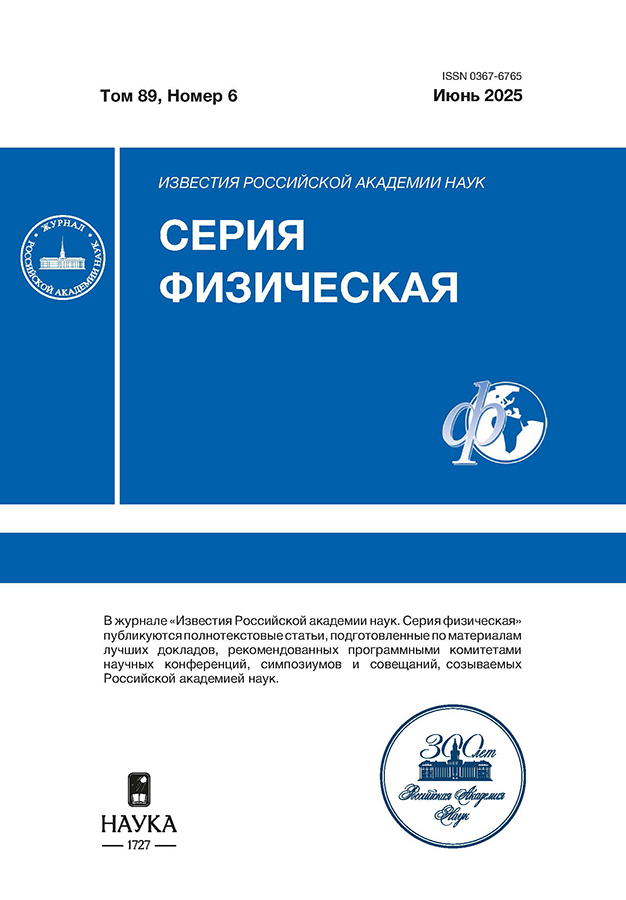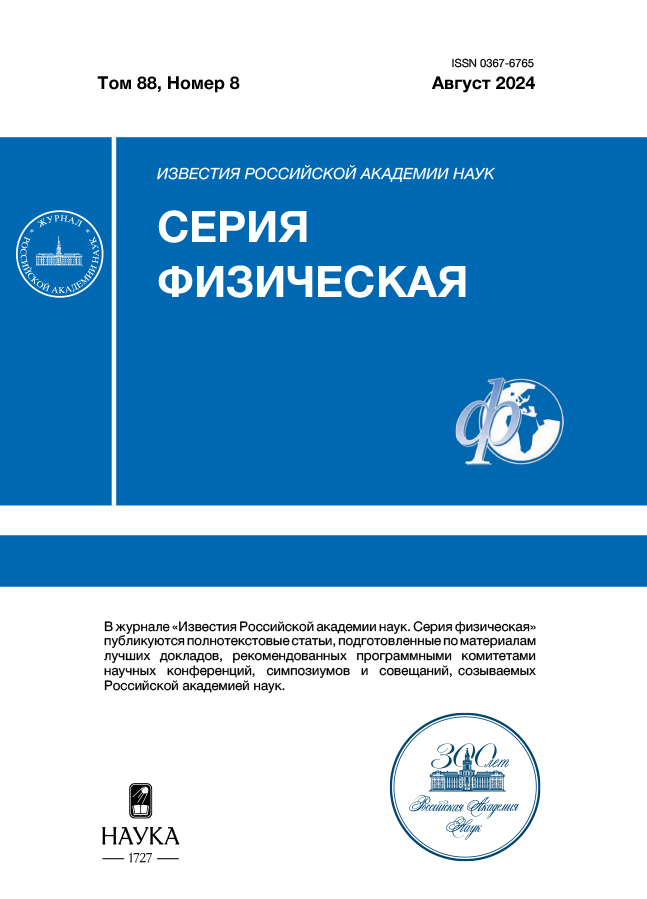Аппаратная реализация и тестирование 4-канальной быстрой электроники для детектора на МКП
- Авторы: Валиев Ф.Ф.1, Калиниченко Н.И.1, Макаров Н.А.1, Феофилов Г.А.1
-
Учреждения:
- Федеральное государственное бюджетное образовательное учреждение высшего образования Санкт-Петербургский государственный университет
- Выпуск: Том 88, № 8 (2024)
- Страницы: 1305-1311
- Раздел: Фундаментальные вопросы и приложения физики атомного ядра
- URL: https://rjpbr.com/0367-6765/article/view/676764
- DOI: https://doi.org/10.31857/S0367676524080231
- EDN: https://elibrary.ru/OOWRTW
- ID: 676764
Цитировать
Полный текст
Аннотация
С использованием программной среды Quartus выполнено моделирование временных измерений для быстрого монитора столкновений пучков частиц на основе шевронных сборок микроканальных пластин (МКП). Алгоритм измерений основан на методе задержанных совпадений. Создана 4-канальная электроника для детектора на МКП на основе быстродействующих компараторов и FPGA EPM240 фирмы ALTERA. Проверка тестового прототипа проведена с использованием 4-канального генератора наносекундных импульсов с регулируемой задержкой между каналами. При использовании данных компараторов и FPGA установлена возможность определения времени регистрации частиц детектором с погрешностью 100 пс, при этом расчетное быстродействие схемы считывания совпадает с измеренным и составляет для 4-канальной системы не более 10 нс на каждое событие.
Об авторах
Ф. Ф. Валиев
Федеральное государственное бюджетное образовательное учреждение высшего образования Санкт-Петербургский государственный университет
Email: n.a.makarov@mail.spbu.ru
Россия, Санкт-Петербург
Н. И. Калиниченко
Федеральное государственное бюджетное образовательное учреждение высшего образования Санкт-Петербургский государственный университет
Email: n.a.makarov@mail.spbu.ru
Россия, Санкт-Петербург
Н. А. Макаров
Федеральное государственное бюджетное образовательное учреждение высшего образования Санкт-Петербургский государственный университет
Автор, ответственный за переписку.
Email: n.a.makarov@mail.spbu.ru
Россия, Санкт-Петербург
Г. А. Феофилов
Федеральное государственное бюджетное образовательное учреждение высшего образования Санкт-Петербургский государственный университет
Email: n.a.makarov@mail.spbu.ru
Россия, Санкт-Петербург
Список литературы
- Колесников В.И., Зинченко А.И., Васендина В.А. // Изв. РАН. Сер. физ. 2020. Т. 84. № 4. С. 575; Kolesnikov V.I., Zinchenko A.I., Vasendina V.A. // Bull. Russ. Acad. Sci. Phys. 2020. V. 84. No. 4. P. 451.
- Жеребчевский В.И., Мальцев Н.А., Нестеров Д.Г. и др. // Изв. РАН. Сер. физ. 2022. T. 86. № 8. C. 1146; Zherebchevsky V.I., Maltsev N.A., Nesterov D.G. et al. // Bull. Acad. Sci. Phys. 2022. V. 86. No. 8. P. 948.
- Baldin A.A et al. // Nucl. Instrum. Meth. Phys. Res. A. 2020. V. 958. Art. No. 162154.
- Сандул В.C., Феофилов Г.А., Валиев Ф.Ф. // ЭЧАЯ. 2023. Т. 54. № 4. C. 848.
- Галактионов К., Руднев В., Валиев Ф. // ЭЧАЯ. 2023. Т. 54. № 3. C. 560.
- Беспалько В.А. // ПТЭ. 2009. № 2. С. 57.
- Будагов Ю.А., Семан М., Ситар Б. и др. Преобразователь время-код с наносекундным разрешением. Препринт ОИЯИ 13—84—395. Дубна, 1984.
- Абрамов Г.Н. Рециркуляционно-нониусный время-цифровой преобразователь. Патент РФ № 2730125 C1. 2020.
- Гурин Е.И., Коннов Н.Н., Механов В.Б., Попов К.В. // ПТЭ. 1997. № 3. С. 102.
- Букин М.А., Титов В.М. Время-цифровой преобразователь с наносекундным разрешением на основе ПЛИС Altera. Новосибирск: Ин-т ядерн. физики имени Г.И. Будкера СО РАН, 2001.
- Sanoa Y., Horiia Y., Ikenob M. et al. // Nucl. Instrum. Meth. Phys. Res. A. 2017. V. 874. P. 50.
- Liu C., Wang Y. // IEEE Trans. Nucl. Sci. 2015. V. 62. No 3.
- https://www.intel.ru/content/www/ru/ru/software/programmable/quartus-prime/overview.html
Дополнительные файлы











